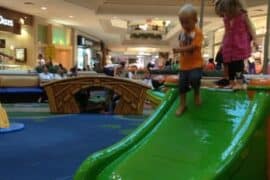Unleash Creativity and Fun with DIY Sensory Toys for Kids!
Welcome to Sensory Wonderland!
Hello there, amazing parents! Are you ready to dive into the colorful and tactile world of sensory play? You don’t need a magic wand or a bottomless wallet to sprinkle some sensory joy into your child’s life. All you need is a sprinkle of creativity, a dash of patience, and the desire to engage your child in the delightful world of sensory exploration. And the best part? You can create mesmerizing DIY sensory toys right from the comfort of your home!
What Are Sensory Toys and Why Are They Important?
Sensory toys are not just any ordinary toys; they are the keys to unlocking your child’s sensory experiences and developmental milestones. These toys are designed to stimulate one or more of your child’s senses, including touch, sight, hearing, smell, and fine motor skills. They’re particularly beneficial for little explorers, especially those with sensory processing challenges. But hey, who doesn’t love squishing a gooey stress ball or marveling at the dance of colors in a homemade lava lamp?
Let’s Get Started: Sensory Toy Ideas You Can DIY Today!
Here’s the scoop, folks! You don’t need a fancy degree in toy-making to create something absolutely special for your tiny tots. With some everyday household items and a pinch of enthusiasm, you can whip up toys that will keep your kids entertained for hours while also aiding their development. Let’s get those creative juices flowing with ideas that will turn playtime into an extraordinary sensory adventure!
- Feely bags: Gather different textured items, such as feathers, stones, or pinecones. Place them in a bag and let your child reach in to guess what they are feeling. It’s like a mini treasure hunt for their fingers!
- Sound bottles: Use empty bottles and fill them with various items like rice, bells, or beads. Shake them up, and voila! You have a homemade orchestra that’s music to your ears – literally.
- Texture balloons: Balloons plus a variety of fillers like flour, rice, or playdough equals a sensory delight. It’s a simple squeeze-and-relax kind of toy that even adults might find themselves reaching for.
- DIY sensory bins: Take a container, fill it with rice, beans, or water beads, and then hide small toys or objects for your child to find. It’s like a mini excavation site in your living room!
The Benefits of Homemade Sensory Toys
Creating DIY sensory toys isn’t just about saving money or having fun—though those are definitely some awesome perks! It’s about bonding with your child, customizing the play experience to their specific needs, and developing crucial skills such as problem-solving, sensory processing, and motor skills. Inclusivity is the name of the game since these toys can easily be tailored to cater to any and all children, despite their diverse learning requirements.
Safety First!
As you roll up your sleeves and prepare to craft these sensory goodies, remember the golden rule: safety first! Always choose non-toxic, child-safe materials, and be sure to supervise your young ones during play to ensure they are not putting small parts in their mouths or engaging in a way that could be harmful. It’s all about safe, sensational fun!
Are you as excited as we are? Fantastic! Stay tuned as we guide you through detailed instructions on how to create these captivating toys at home. Each project comes with a set of easy-to-follow steps, clearly listed materials, and helpful tips to ensure your DIY adventure is a roaring success for you and your kiddo. Let’s get crafting and watch your little one’s eyes light up with wonder!

Five Things Every Parent Should Know Before Crafting DIY Sensory Toys
Before diving into the wonderful world of DIY sensory toys, here are five essential tips to ensure your crafty efforts lead to safe and successful sensory play:
- Understand the Sensory Needs of Your Child: Every child is unique, and their sensory needs can be just as individual. Observe how your child reacts to different stimuli to tailor your sensory toys to their preferences. Some may prefer calming textures, while others might seek vibrant visual input.
- Gather All Materials In Advance: Make a list of everything you’ll need for your DIY sensory project to ensure you don’t have to pause midway. A well-prepared crafting session is a smooth and enjoyable one. Ensure that all materials are safe, non-toxic, and appropriate for your child’s age and developmental stage.
- Embrace the Mess: Sensory play can often be a messy business, but that’s part of the fun and learning! Set up a space for crafting and playing where a little mess won’t be an issue. Aprons, tablecloths, or playing outside can all help contain the creative chaos.
- Involve Your Child in the Process: The journey is just as important as the destination. Involve your child in the crafting process, it can enhance their sense of creativity and ownership over the toy. Plus, it offers an additional layer of sensory experience and fine motor skill practice.
- Be Mindful of Safety: Check for choking hazards, avoid sharp edges, and be mindful of any allergies. For added reassurance, make sure your DIY sensory toys are durable and won’t easily break down into smaller pieces during play. Supervision is key, especially with young children.
With these five foundational tips, you’re now better prepared to create a sensory-rich environment that stimulates and delights your little one’s senses. So, don your crafting cap and let’s get started on this exciting DIY sensory toy adventure!
See more great Things to Do with Kids in New Zealand here. For more information see here
Disclaimer
The articles available via our website provide general information only and we strongly urge readers to exercise caution and conduct their own thorough research and fact-checking. The information presented should not be taken as absolute truth, and, to the maximum extent permitted by law, we will not be held liable for any inaccuracies or errors in the content. It is essential for individuals to independently verify and validate the information before making any decisions or taking any actions based on the articles.




